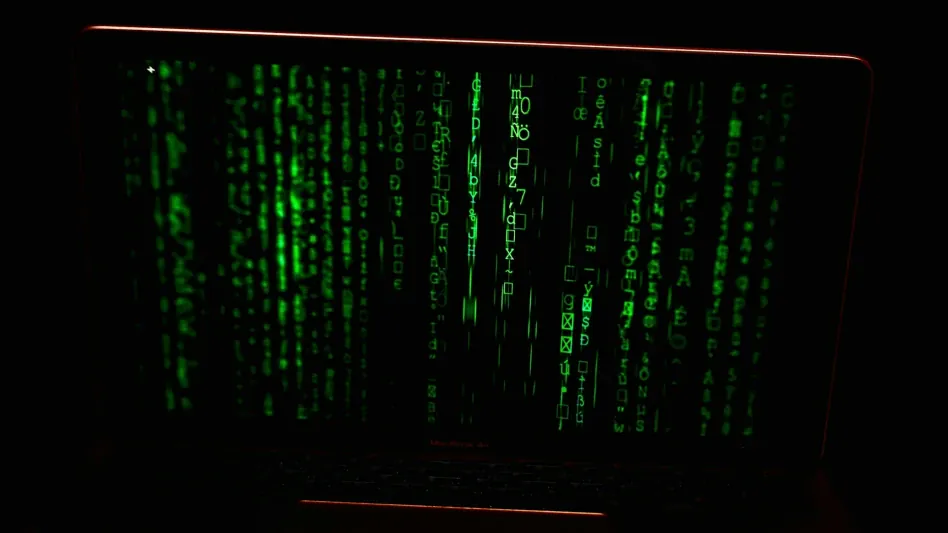A recent monumental data breach involving Twitter, now rebranded as X, has sent shockwaves throughout the cybersecurity community, highlighting an urgent need for enhanced security measures. This breach, involving 2.87 billion user profiles, far exceeds the site’s current active monthly user base and encompasses data dating back to the platform’s infancy. Speculation has arisen that a disgruntled former employee dismissed during Elon Musk’s acquisition may be responsible. This theory is supported by the insider access required and the suspicious timing of the leak shortly following mass layoffs.
Unprecedented Data Leak
Details of the Breach
The breach’s spotlight comes from a user named “ThinkingOne” on Breach Forums, a platform associated with underground hacking activities. While ThinkingOne has not claimed direct involvement in the breach, they have suggested that the data leak likely resulted from an insider retaliating against their dismissal from the company. The suggestion carries weight due to prior Twitter breaches where employees had extensive unauthorized access to user data. The leak’s staggering volume of historically significant information, dating back to Twitter’s early days, underscores the severe implications for user privacy and data security.
In January 2025, this significant data leak went largely unnoticed by mainstream media until recently. ThinkingOne uploaded a 34 GB file on Breach Forums, claiming it was a combination of a recent leak with an older one from 2023. This file contained metadata not publicly available, including more precise account creation dates, location data, time zone settings, and details on the methods used to post the most recent tweets. ThinkingOne asserts that their motive was to issue a public warning rather than to seek profit or engage in activism. The timing and extent of this leak have led to widespread speculation and concern regarding the potential misuse of the exposed data.
Data Leak Characteristics
This latest breach data, intriguingly combined with information from a 2023 data scraping incident performed by another hacker, included user account email addresses. While Twitter had acknowledged the 2023 data breach, stating that it only involved publicly available information, the inclusion of email addresses calls that claim into question. Third-party verification has corroborated the validity of the new data leak, adding credence to ThinkingOne’s reputation for demonstrating reliability in analyzing and authenticating leaked datasets. Despite repeated attempts, their warnings to Twitter about this significant new leak have reportedly been ignored, increasing the urgency for the company to address the data breach conclusively.
Adding to the complexity of the situation, the merged data set includes both recent and older breached data, potentially from different sources. This is critical because metadata, email addresses, and other non-public details present a more comprehensive threat than previously acknowledged. This raises important questions about the integrity of the security measures Twitter had implemented and the preventive steps undertaken to prevent such breaches. Vigilance in monitoring and safeguarding confidential data must be paramount for the company’s future operations and its user’s trust.
Insider Source Theories
Insider Threats
The theory of the recent breach resulting from an insider threat is based on historical data showing that Twitter employees have previously had considerable access to user information. The most prominent example is the 2020 Twitter hack, where teenagers managed to access high-profile accounts through low-level employee credentials. This breach highlighted vulnerabilities within the administrative controls and revealed the level of access lower-tier employees could potentially exploit. Such historical precedents make it plausible, albeit unconfirmed, that insider involvement played a role in the most recent massive data leak.
The exploitation of an administrative tool similar to the one used in the 2020 breach could explain the extent and precision of the leaked data. However, even considering the historical context, it is essential to maintain caution in correlating past insider activities directly with the recent breach, as advancements in security infrastructure could have altered the dynamics. Understanding the precise methods and tools used by the insiders and the reasons for their retaliatory actions remains critical to forming a definitive conclusion regarding insider involvement.
Counterarguments to Insider Involvement
On the other hand, some security experts present a counterargument contending that if insiders were indeed responsible, they would have likely had access to more sensitive data than what has been exposed. They argue that if inflicting maximum damage were the goal, the leaked data would also include direct messages or detailed IP logs, none of which are currently part of the breached information. This absence of highly sensitive information suggests the possibility that an external actor, rather than an insider, might have been responsible.
Another point raised is that disgruntled ex-employees would likely aim to release the most damaging information possible to inflict the greatest reputational harm on the company. Without the inclusion of more sensitive data, such as private communications, the possibility of a less-experienced unauthorized hacker exploiting system loopholes cannot be dismissed. Therefore, while the insider theory remains compelling, the lack of highly sensitive data merits consideration of alternative actors and methods for the breach.
Expert Opinions
Security Measures
Renowned security experts have weighed in on the implications of the breach and the preventive measures X should take. Randolph Barr, CISO at Cequence, stresses the importance of verifying the extent of the data leak and establishing comprehensive data governance programs to ensure better protection of sensitive information. He insists that concrete evidence is required to affirm whether an insider was involved, emphasizing that circumstantial observations alone are insufficient. He highlights the importance of advanced monitoring systems and behavioral analytics to detect unauthorized access early. Automated reviews and integrating modern technologies are crucial for identifying anomalous activities and preventing potential breaches.
Moreover, Barr stresses the critical role of ongoing monitoring of data loss prevention systems. Organizations must create robust internal controls and maintain vigilant oversight to minimize vulnerabilities. By investing in data encryption, access controls, and constant auditing, organizations can ensure a more fortified information security framework. Mitigating insider threats requires a multifaceted approach involving technological solutions, policy enforcement, and fostering a culture of security awareness among employees to reduce risks associated with internal exposures.
Breach Detection and Prevention
Andrew Costis from AttackIQ further emphasizes the importance of robust breach detection and prevention measures for organizations. Costis outlines proactive testing and validation of security controls as essential steps to protecting customer data. Insider threats present unique challenges because they are often harder to identify and neutralize than traditional external threats. He advises organizations to implement multi-factor authentication, regular audits, and continuous network monitoring to enhance their security posture.
Enhanced training programs educating employees on potential security risks and encouraging vigilance can also reduce the likelihood of internal breaches. With insider threats evolving, security protocols must be continuously updated to address emerging vulnerabilities. Costis encourages companies to view security as an ongoing process rather than a one-time fix. He also notes the importance of proactive measures like penetration testing and red teaming exercises to identify weaknesses before malicious actors can exploit them.
Human Element Challenges
Renuka Nadkarni, CPO at Aryaka, emphasizes the persistent challenge of managing human elements in maintaining organizational security. Nadkarni highlights the fragmented security landscape that security teams face, where the mix of legacy applications, SaaS platforms, and cloud-hosted solutions complicates the effective management of security controls. This fragmentation makes it harder to enforce consistent security measures and access controls across diverse technological environments. Consequently, organizations must integrate security measures across varying applications to minimize vulnerabilities and ensure robust protection.
Nadkarni notes that balancing security and usability is a continuous challenge for security teams. Ensuring that employees have the necessary access to perform their roles effectively while preventing unauthorized access to sensitive data requires a multi-layered and collaborative approach. Security teams should work closely with other departments to ensure comprehensive security coverage without hindering productivity. By fostering a culture of shared responsibility and ongoing security education, organizations can better protect their intellectual property and data from internal and external threats.
Need for Proactive Security
Enhancing Security Measures
Addressing the significant implications of the recent data breach, the article underscores the importance for organizations like X to strengthen their security practices. Evaluating current security frameworks and incorporating modern technology proactively to identify and mitigate data breaches is imperative. This includes implementing robust data governance programs, advanced threat detection systems, and comprehensive employee training programs. The continuous enhancement of security measures is vital to keeping pace with evolving threats and ensuring the protection of user data.
Organizations must adopt a proactive approach to security, not solely relying on reactive measures post-breach. Integrating holistic security strategies that encompass preventive, detective, and corrective measures can significantly bolster an organization’s defense against both internal and external threats. Timely updates, regular security audits, and fostering a security-aware culture within the organization are essential steps toward achieving a resilient security framework.
Ongoing Investigation
A recent massive data breach involving Twitter, now known as X, has caused significant alarm within the cybersecurity sector, emphasizing an immediate need for stricter security protocols. The breach, which compromised 2.87 billion user profiles, surpasses the platform’s present active monthly users and consists of data from as far back as the early days of its operation. There are speculations that the breach was caused by a former employee who was let go amidst mass layoffs during Elon Musk’s takeover of the company. This theory is gaining traction due to the insider access required to execute such a breach and the timing of the incident, which coincidentally occurred soon after these terminations. The situation underscores the necessity for companies to fortify their cybersecurity defenses and to be vigilant against internal threats. Continued vulnerabilities of this magnitude could result in severe repercussions, not only affecting user trust but potentially the overall stability of the platform.








